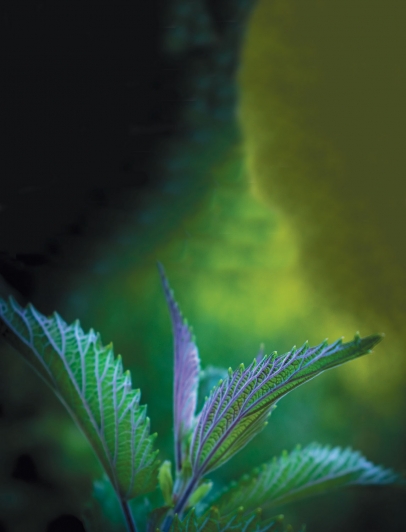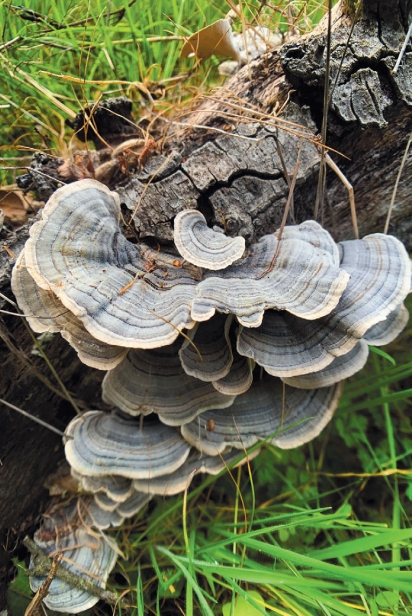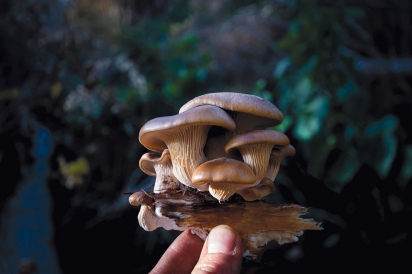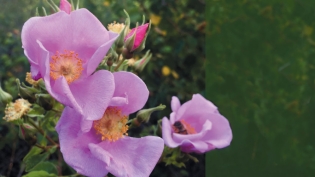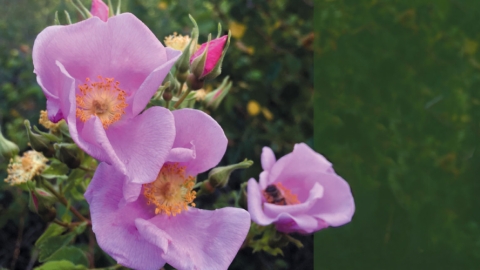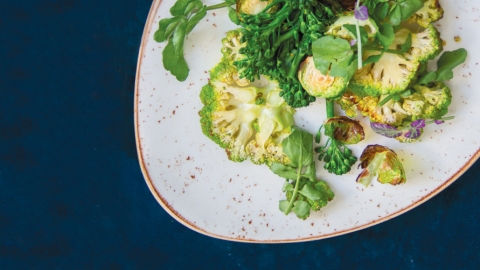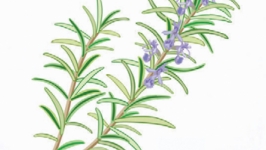Winter Wilds
Winter is the season that Southern California foragers and wildcrafters get excited about. It is when the first green sprouts and mushrooms finally appear after seemingly endless months of dry weather. This season is prime time for nettle, mallow, dandelion, chickweed, bur chervil and many others. Keep an eye out for wild mushrooms such as oyster, turkey tail, wood blewit mushrooms and other edible species. Be completely certain of your identification before eating any wild foods, especially mushrooms.
STINGING NETTLE (Urtica dioica) has received a bad reputation for its nasty, burning sting when your skin brushes up against it in the garden or on the trail, but otherwise earns its place on the plate for its nutritional and healing benefits.
Why Should We Eat It? Nettle is loaded with vitamins and minerals, making it one of the most nutritious greens. It helps to reduce blood pressure, lessens seasonal allergies and regulates blood sugar.
Harvesting: Collect the leaves and tops using gloves. Blanch briefly, blend or dehydrate to denature their stinging hairs before consuming.
Try It! Nettle is a pleasant, robust, earthy green that can be added to soups and stews, smoothies or tea, and also makes an excellent pesto.
TURKEY TAIL MUSHROOMS (Trametes versicolor) are one of the most researched and studied medicinal mushrooms and they grow abundantly here in Ventura County.
Why Should We Eat It? Medicinal benefits include immune system boosting; contains antioxidants; may prevent cancer; and enhances the microbiome.
Harvesting: These small shelf polypore mushrooms grow on dead or dying hardwoods and have a white porous underside and striated top surface.
Try It! While the mushroom itself is too fibrous to eat, they make a delicious and immune-boosting broth that can be added to teas, soups, stews, legumes and grains to extract their flavor and health properties.
OYSTER MUSHROOMS (Pleurotus ostreatus) are easily cultivated but also have a delicious wild counterpart with a bit more complex flavor.
Why Should We Eat It? These low-calorie mushrooms are rich in many vitamins and minerals, help to lower cholesterol with significant antioxidant effects and are considered an immune system tonic.
Harvesting: These gilled mushrooms grow on dead or dying deciduous trees such as willow and cottonwood.
Try It! Use these as a substitution in any recipe calling for white button or portobello mushrooms for a gourmet upgrade, or try seasoning and oven roasting or grilling the large caps whole. They are also great pickled or seasoned and dehydrated into “jerky.”
For more on foraging visit JStarwood.com.


